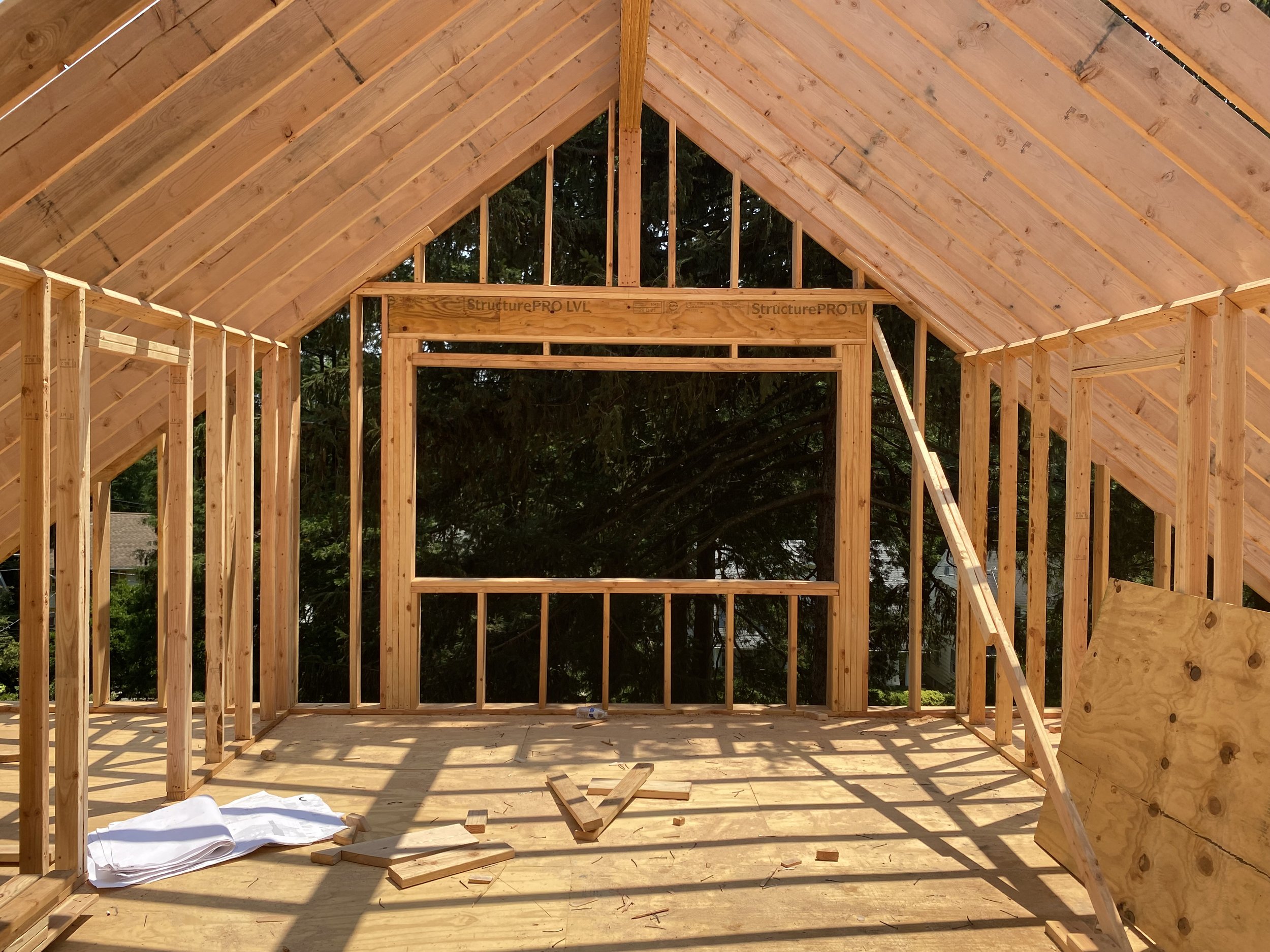Update: Q3 2024 ** NOTE: Clawson Architects is not qualified to give financial advice. We are simply sharing our observations.
According to CoreLogic, “Since January, US costs for carpet, clay bricks, insulation, steel decks, and aluminum conduit have all increased. cost for galvanized pipe, Pex pipe (Pluming) and PVC pipe (Pluming), ceramic tile and lumber have decreased.
Note that while the price of lumber has come down, the new energy codes require thicker walls with more insulation — so, while the cost of lumber may have come down, you will need bigger/more members than in the past to meet the insulation requirements, and with the insulation prices up and the requirement for a higher R value, there is a net cost increase.
Our observation is that while pricing is not spiking, it continues to increase compared to last year. Further, the need for skilled labor remains..
While many think they can build for less, what we are observing is that homes in the metropolitan area selling at a similar cost/sqft as the bids we are reviewing.
Lastly, Q3 2024 contractors in the residential sector of our area have loosened up some since the pandemic, in that they are getting the materials they need to keep a job moving…however, there is still a backlog of work and depending on the scope of work, the contractors we work with are still very busy as can be observed by the number of trucks and dumpsters we see in the towns we work in.
Original Blog starts here —
The global challenges of the past two years have had a record setting impact on the cost of construction. As we interact with contractors and suppliers each and every day, we are intimately familiar with the surging costs of building over this time. Everything from the cost and availability of materials, labor costs, to the impact of the surging oil prices on items like synthetic stone countertops, structural adhesives, and roofing materials has resulted in substantially higher constructions costs.
Projects under construction are seeing surcharges as lumber yards will not hold pricing on lumber.
Clawson Architects does not provide financial advice or services to our clients, but we feel strongly that we should share information and some of our observations which we feel would be helpful to our clients when determining how to approach their project(s). Our observations are intended to provide one perspective for our clients to consider in their planning and decision-making process.
Our clients are currently receiving pricing from contractors for renovation projects that are approximately double (and sometimes more than double) what the same scope of work cost two years ago. In the nearly 40 years we have been working in the industry, we have never witnessed rampant inflation like this.
Our purpose in sharing this information, is to give you a glimpse of what is happening in the industry from our perspective. In speaking to colleagues, material suppliers, sales representatives, and contractors, they all are trying to navigate the current economic dynamics in strategic and tactical ways. The challenges are great and unprecedented.
Below are exhibits providing information from several vantage points as they relate to the construction industry.
Relevant Data
The following data is intended to demonstrate the significance of the cost volatility.
Recent Inflation related specifically to lumber,
o Prices began soaring shortly after the pandemic hit when the mills shutdown.
o The Random Lengths Framing Lumber Composite, an industry benchmark, increased roughly 175% between April and September, setting all-time highs each of the final 9 weeks of that span.
o In May 2021, the FLCP topped $1,500/thousand board feet ($1,500/mbf) which is nearly 3 times the pre-pandemic record.
o The price of framing averaged roughly $550 in 2020 and $850 in 2021 and ended 2021 at $1,148 and went up to $1,463 on March 3rd, 2022. That is a 27.4% increase in two months!
Image from —Eye On Housing
National Association of Home Builders Discusses Economics and Housing Policy
The volatility is off the charts, but prices simply don’t come down and pass through to the consumer as quickly as they go up. At this moment, the spot price of lumber is $970, but the price of lumber to contractors/consumers has not come down.
The cost of a piece of ¾” standard plywood is 252% higher today, than it was one year ago. From $37.98 / sheet in March 2021 to $95.98 today.
The average price of framing lumber, even after adjusting for inflation, was 17% above its 25-year average, and broke the prior record set in 1996.
As the owners of a cabinet dealership, we have seen multiple increases. Typically, these increases happen once a year in February. Last year they increased every quarter and again, we are told that yet another price increase of 4.5% for all of their goods is effective May 2, 2022.
Oil and its impact on Construction - As automobile owners and travelers no one has to tell you about the skyrocketing cost of oil and gasoline. In order to understand the impact on construction costs you should know that oil is a large component in the construction industry
It is use to run the mills/equipment
Transport the goods
Oil and its bi-products are in:
Paint
Plywood
Plastics
Resins
Composite Counters
The following chart shows the radical increase in the cost of crude oil per barrel over the nine months.
Skilled Labor—Getting and retaining skilled labor been a challenge for many contractors for a while. In fact, ten years ago the American Institute of Architects and the National Kitchen and Bath Association named this as one of the biggest problems we would have in the future. They began to campaign and offer scholarships to trade schools to people that would pursue a career in the trades.
Just last week an owner of a millwork shop we use shared that his staff demanded double wage increases or they would quit. He has signed agreements for work and is being squeezed by the increased cost of materials/gas and now his employees.
After Hurricane Ida, a local fabricator lost much of its equipment. Their employees lost their belongings and decided to leave the company, and start anew elsewhere, leaving that business searching for equipment and talent.
As a result, all these factors: cost of goods, shortage of skilled labor, supply chain and the costs that each business in the chain needs to incur to get it to the job site are creating an economic impact across all projects, at every level. While commodity prices may go down, supply chain issues stubbornly persist and labor costs are unlikely to ever retrace. Much of these costs are likely here to stay.
In regards to “what are our ‘other’ clients doing?”, some are moving forward as planned, some are scaling back, and others are limiting their projects to what is require to improve their current living conditions, while some are pausing. We want you to know that we value our relationship with you and are here to assist you no matter what decision you make.
Basic Economics —National disasters/weather events and wars all contribute to cost increases and availability. As climate change brings stronger and more damaging weather events, we will see spikes in material costs.




